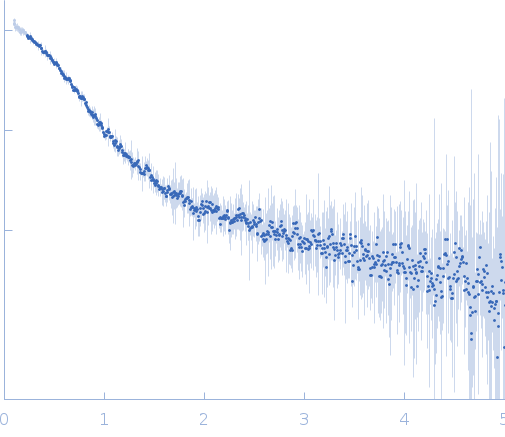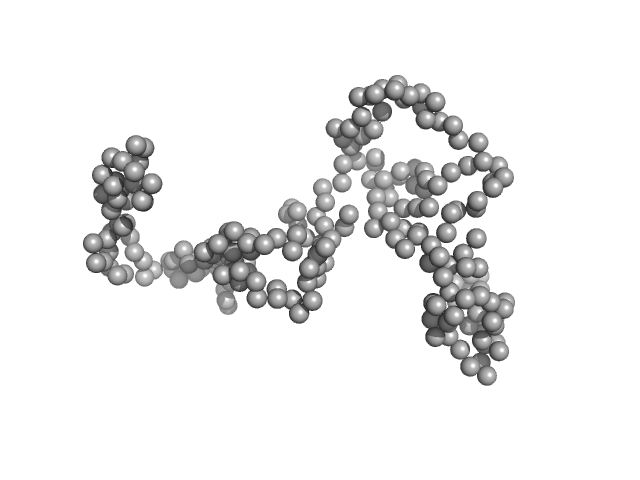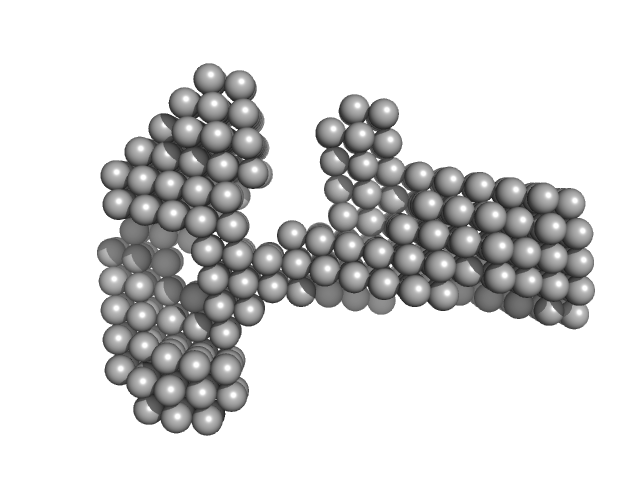| MWexperimental | 50 | kDa |
| MWexpected | 57 | kDa |
| VPorod | 81 | nm3 |
|
log I(s)
1.47×105
1.47×104
1.47×103
1.47×102
|
 s, nm-1
s, nm-1
|
|
|
|

|
|

|
|
SAXS data from solutions of thymidylate kinase in 20 mM Tris, 150 mM NaCl, pH 8 were collected using an Anton Paar SAXSpace instrument equipped with a Mythen2 R 1K detector (CSIR-Central Drug Research Institute, Lucknow, India) at a sample-detector distance of 0.317 m and at a wavelength of λ = 0.154 nm (I(s) vs s, where s = 4πsinθ/λ, and 2θ is the scattering angle). One solute concentration of 9.00 mg/ml was measured. The data were normalized to the intensity of the transmitted beam and radially averaged; the scattering of the solvent-blank was subtracted.
Experimental temperature: UNKNOWN. X-ray exposure time: UNKNOWN. |
|
|||||||||||||||||||||||||||